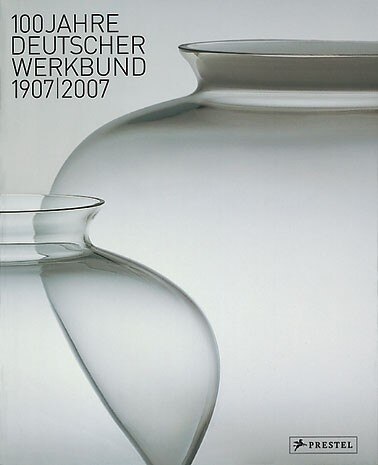100 jahre Deutscher Werkbund 1907-2007, edited by Winfried Nerdinger, Prestel, Monaco di Baviera 2007 (pp. 380, € 59,90)
It is quite unusual to celebrate a centenary wondering whether the object of celebration has survived itself or not. But in the case of the Deutscher Werkbund the question that ends the editor’s foreword is not misplaced. Who can still see a continuity between the model of “reformers of the quality of life” followed by Switzerland, Austria, France, the UK and Sweden and the fragmented organisation of which many traces have been lost between the 1980s and the present day?
Fifty contributions retrace the fundamental stages that saw the German Werkbund as the protagonist, the frame, the utopia and sometimes the label, developing the question around its “life” or “death” (remember here, in particular, Joan Campbell, p. 132-34, already known in Italy for her monograph on the subject). The resulting account is updated on the facts, people and conflicts and told with expert balance and exceptional critical distance. There is no concession to the emphasis that could still be prompted by the recently restored Weißenhofsiedlung, the “Gute Form”, and the Ulm School 40 years after its closure. The book highlights an association of craftsmen, designers ante litteram, entrepreneurs and architects that counted almost 2,000 members at the height of its success (as demonstrated by the chronology in the appendix) and as such it was extremely heterogeneous.
Shortly before the Great Depression, the Werkbund was the only institution capable of organising a Universal Exhibition to match the 1925 Parisian one. Therefore, despite the failure of the “Die neue Zeit” project, there was an unsurprising battle to try and survive in 1934-1938 Germany. With a Bauhaus closed and reduced to the stuff of legend, the Werkbund acted as a shield to Gropius and Mies alongside the dissident Wagenfeld and the (later) obedient Hermann Gretsch. During the postwar reawakening in a divided country, “reform” and ”invention” (p. 335) – sometimes re-invention – were two key words for the continuing experience of a decentralised and disorientated Werkbund. However, we should not forget that the 100-year forced survival has entailed a host of compromises. The terrain on which the Werkbund was refounded was not the legendary “year zero”: Gute Form became a tool of education in the schools – verging on paradoxical if you think that the educational material was Gretsch’s bone china.
The self-referential moment began in 1983 and the desire for reform clashed with the kitsch style favoured by consumers. Exhibitions, its historic forte, were no longer effective as they had been overworked all around it. There are no solitary heroes in this book. Although the companies were a crucial factor, the book does not list them, describe them in detail or use them as a reason to digress. And although the biographical appendix does mention the theoreticians, architects and designers, the fullpage posters by Lucian Berhnard for AEG, Adler and many more speak volumes. In contrast, apart from the contribution on today’s journal Werk und Zeit, too little emerges on the numerous monographs published by the Werkbund as Notebooks (Hefte).
The even-tempered patina of the narration is broken at the end in the appendix by 12 off-stage voices, past and present. The debate is rekindled when they are asked about the future of the institution, which today has its headquarters in Munich, as in the early days. This is not an obituary, nor is it the only book published on the illustrious éminence grise in Germany this year. But it is doubtlessly an honest book that will bring many readers closer to the Deutscher Werkbund, the mirror of a century, “varius, multiplex, multiformis” (Yourcenar) and it will certainly live on after the exhibition it accompanies.
Donatella Cacciola Art Critic


